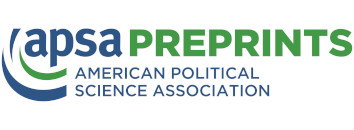Abstract
Understanding the role of emotions in protest is a growing field of research, but existing research does not address the role of emotions once protests start. By applying computer vision models to the expressed emotions of the 37,558 faces in 7,824 geolocated protest images across twelve protest waves in ten countries, this article makes five contributions to the study of emotions and protest. Most importantly, it measures emotions within protest waves, not before them. It also investigates emotions' temporal effects, multiple emotions simultaneously, connects them directly to actual protests, and does so across multiple countries. The results suggest that anger, disgust, fear, happiness, sadness, and surprise occur simultaneously throughout a protest, though happiness peaks on the first day. Emotions sometimes correlate with protest size in unexpected directions, and the coefficient signs differ by country. The most consistent finding is that models without lagged terms outperform those with lags, suggesting emotions


![Author ORCID: We display the ORCID iD icon alongside authors names on our website to acknowledge that the ORCiD has been authenticated when entered by the user. To view the users ORCiD record click the icon. [opens in a new tab]](https://preprints.apsanet.org/engage/assets/public/apsa/logo/orcid.png)
